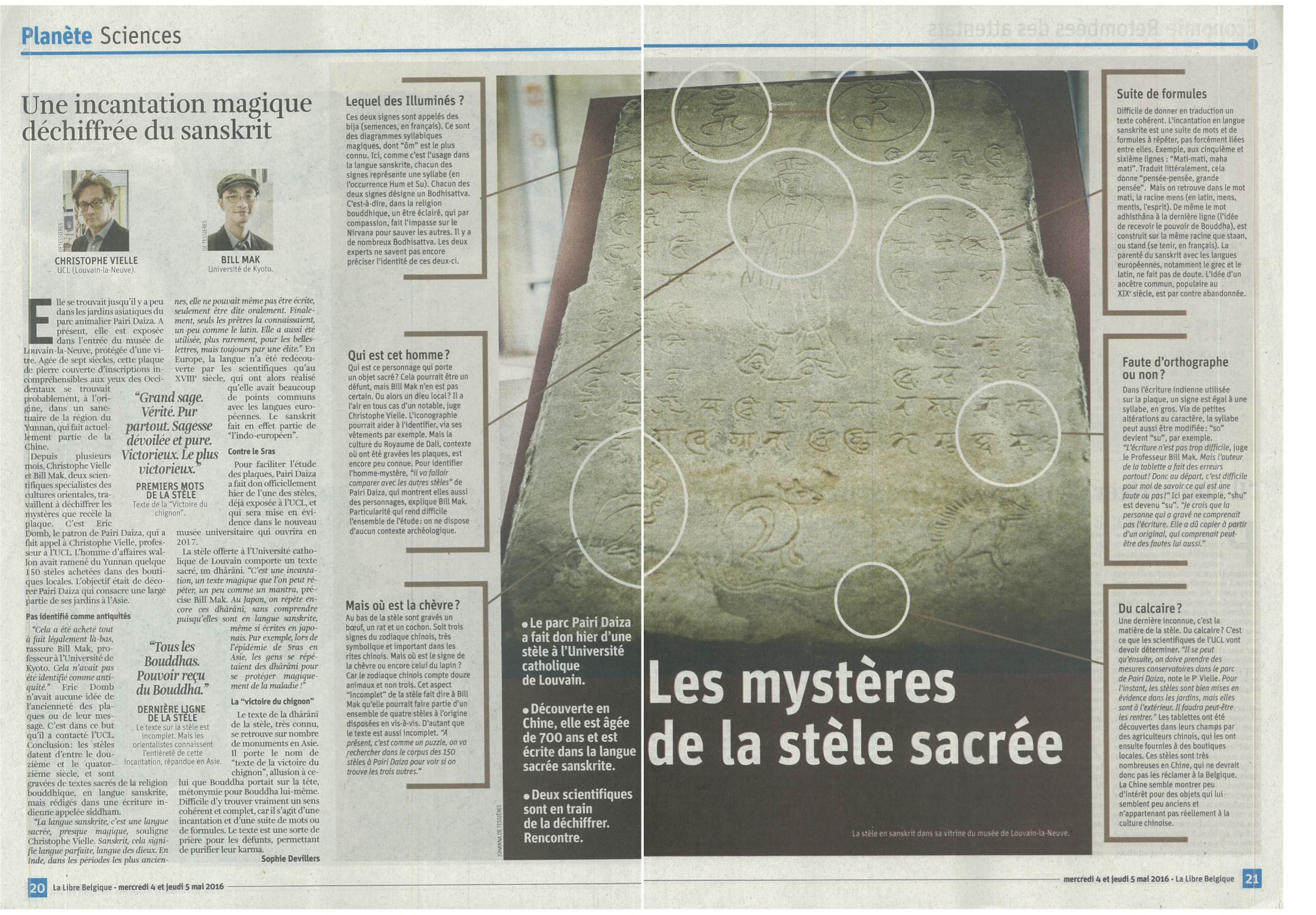麥氏源流與上古漢語“麥”(*mlək)的古印歐詞源
“麥”儘管算是廣東大姓,卻不見於《百家姓》。北宋年代的《廣韻》,把“麥”一字收進入聲字裡,並作以下的記載:
《白虎通》云:麥金也,金王而生,火王而死。又姓,隋有將軍麥鐵杖,嶺南人,俗作麦。莫獲切,八。
可見麥姓有至少過千年的歷史,而且與嶺南地區有密切的關係。
《白虎通》是後漢作品,幾乎同年代的《說文解字》,把“麥”字解為“芒穀。有芒朿之穀也。”古代的五穀有不同的說法,一般包含黍、稷、麥、稻,偶爾豆、麻、黍等亦包含其中。其中帶芒,有麥和稻米,兩者都是中國近現代北方和南方的重要食糧。考古發現稻米在珠江和黃河流域有超過八千年的歷史。
那麼麥呢?
對南方人來說,稻米不單是主要食糧,還可以說是生命的一部分。過去聽說香港人出外旅遊,因為擔心沒有好飯吃,還自備米和電飯煲呢!不過去過北方的朋友不難發現,米飯在中國很多地方不算是主食,有時候餸吃完了才補一碗米飯,不像南方飯餸是跟米飯一同吃的。北方人吃麵食多,麵是麵粉做的,看到“麵”字裡的“麥”,便知道原料是麥。奇怪的是,中文裡我們現在都說小麥和大麥,光說“麥”大家有時弄不清楚是“大麥”、“小麥”、“燕麥”還是“蕎麥”。以上四種“麥”,英語分別是barley、wheat、oat和buckwheat,是四種完全不同的穀物。但做麵食的,一般是小麥(也有蕎麥等麵)。我們吃的麵包、餅乾、意大利粉、拉麵、油條、雲吞和餃子的皮,甚至啤酒,全都是小麥製成的。以全球產量計,玉米第一,小麥就是第二了。
不過,小麥種植的發源地,原來並不是在北方的中國,而是中東和西亞地區,特別是約旦、敘利亞,現在戰亂橫生的那一帶。據科學考證,有超過一萬一千年的歷史。美索不達米亞幾乎一萬年前不但栽種小麥,還有製造啤酒呢!小麥傳到中國,至少有是公元前三四千年的時。科學家在中國各地發現一些古代碳化的麥粒,儘管沒有達成完全一致的結論,但確實說明了中國地區是先稻米,後小麥,而且麥是從西方經過幾千年,穿越了中亞地區,慢慢的傳過來的(圖)。
最奇怪的是“麥”這一姓卻出現於嶺南,既不是種麥的地區,過去也沒有以麵食為主食的文化。反而種植小麥的北方,卻幾乎沒有聽過有姓麥的!今年三月參加了於中文大學主辦的李約瑟研討會[短評],與會的趙志平教授(中國社會科學院)發表了一篇關於古代小麥傳入中國的考古發現的文章,說明小麥傳入中國境內可能早至距今4500年,比過去三四千年的說法要早,傳播路線分草原和綠洲兩路,都是源於西亞。還有很早就逐步取替了粟和黍兩種小米,最後形成「南稻北麥」的農業生產格局。
按《麥氏族譜》還有《廣韻》的佐證,隋代的麥鐵杖將軍是嶺南人,隨軍攻打突厥。所以說到南北朝以後的南方,不是戰國時代描寫的南方,南蠻荒野之地,而且南北相通,由於北方長期處於戰亂還有北方外族入侵和往南遷徙,南方逐漸成為承傳中原文化的根據地,和中國近千年的經濟和文化發展核心。一個南方的“麥”姓,裡面隱藏了一段鮮為人知,穿越時空和地域,超過千、甚至萬年的文化交流史。
一個“麥”字,包含了什麼秘密?儘管如上所述,麥是外來物,但字見於金文,甚至更早的甲骨文,所以說在中國已經有一段十分悠長的歷史了。不過一個字的歷史,除了文字外,還有歷史更早的讀音。那就是說,一個字的發音,其中包含了遠古的記憶,往往超越文字。文字有實物為證,還有作為歷史記憶實物不變。語音則世代相傳,不斷的演化,不過語音的演化也有它的規律,通過語言學家的分析,往往得到驚人的發現。
幾年前跟瑞士漢學家Wolfgang Behr交流,談到麥字,我們就想到既然麥是外來物,麥字的發音也很可能是外來語的譯音。粵語裡的麥字是入聲字,拼音是mak,這跟《廣韻》裡的切韻“莫獲切”(m+ak)完全一致,是古漢語的發音。在看“麥”的古字,上面一個來字,整體是個麥穗加麥粒的形狀,也有語言學家推論是一個形聲字,古聲母為ml-,因此“麥”上古音是“mlak”。這和古印歐詞根melə有相關之處。melə一詞有以下解釋:
Also melə-
To crush, grind; with derivatives referring to various ground or crumbling substances (such as flour) and to instruments for grinding or crushing (such as millstones). Oldest form *melh2‑.
- O-grade form *mol‑. maelstrom, from Middle Dutch malen, to whirl, from Germanic *mal‑.
- Full-grade form *mel‑. meal1, from Old English melu, flour, meal, from Germanic suffixed form *mel-wa‑.
- Zero-grade form *ml̥‑. mold3, molder, from Old English molde, soil, from Germanic suffixed form *mul-dō.
- Full-grade form *mel‑.
- meunière, mill1, mola2, molar2, mole4, moulin; emolument, immolate, ormolu, from Latin molere, to grind (grain), and its derivative mola, a millstone, mill, coarse meal customarily sprinkled on sacrificial animals;
- possible suffixed form *mel-iyo‑. mealie, miliary, milium, millet; gromwell, from Latin milium, millet.
- Suffixed variant form *mal-ni‑. malleable, malleolus, mallet, malleus, maul; pall-mall, from Latin malleus, hammer, mallet.
- Zero-grade form *ml̥‑. amylum, mylonite, from Greek mulē, mulos, millstone, mill.
- Possibly extended form *mlī‑. blini, blintz, from Old Russian blinŭ, pancake.
[Pokorny 1. mel‑ 716.]
作為詞根,melə出現不同的型態:
melə- : mlē-, mel-d- : ml-ed-, mel-dh-, ml-ēi- : mlī̆-, melə-k- : mlā-k-, mlēu- : mlū̆-
韓語和日語,“麥”按照漢音分別讀為맥(maek)和バク (baku,或吳音ミャクmyaku)。不過,韓國和日本也有自己語言本來的發音,日語訓音“麥”念為ムキmugi,跟古漢語一樣,保存了一個g/k的尾音,大概是小麥與四五千年前傳到東亞地區時的遠古記憶。所以,如果日本朋友把我的姓唸作mugi,把我稱作Mugi-san,我倒不太介意。反而中國大陸同胞把我的姓唸作mai,感覺有點彆扭。因為mai已經不是入聲字,而且北方方言同音字那麼多,不看漢字根本不知道mai為何物。
像赫梯語等古印歐語中,與melə-詞根相關的詞一般指“磨”的動作,就是把小麥磨成麵粉的意思。所以英語裡的mill(磨坊),molar(臼齒),meal(粉,與餐食的meal不同)出處相同,發音也保存了m和l兩個聲母。古漢語保存了m聲母,l聲母在“麥”字的發音脫落了,但在原來為麥穗象形字的“來”字中保存下來。而麥字在日語和古漢語中亦保存了入聲字韻尾的k/g聲母,這是出於詞根變化*melə-k-/mlā-k-,還是受到古中亞某種語言的影響,那則有待考察。
去年到印尼學習古爪哇語,教授是荷蘭的Wilhem van der Molen。我驚訝的跟他說,我們名字就像兄弟,一東一西!我的中文名字為文彪,英文取粵語發音為Bill。Bill即William的縮略,跟法語Guillaume和德/荷蘭語的Wilhem同出一轍。Molen荷蘭語就是磨坊,跟“麥”一樣,同是出於古印歐語的*melə-k。
這篇短文是獻給父親的。家父多年對家史和麥氏族譜甚感興趣,還有熱心宗親事業,多年參與南雄珠璣巷麥氏宗祠的修建。每次回老家我都會翻一下父親收藏的族譜和各種材料。想到我們家族過千年的歷史,從麥鐵杖公到現在麥氏子孫散佈全球,人類文明和歷史的變遷,往上推可以看出一片新世界,以後未來就不知曉了。

